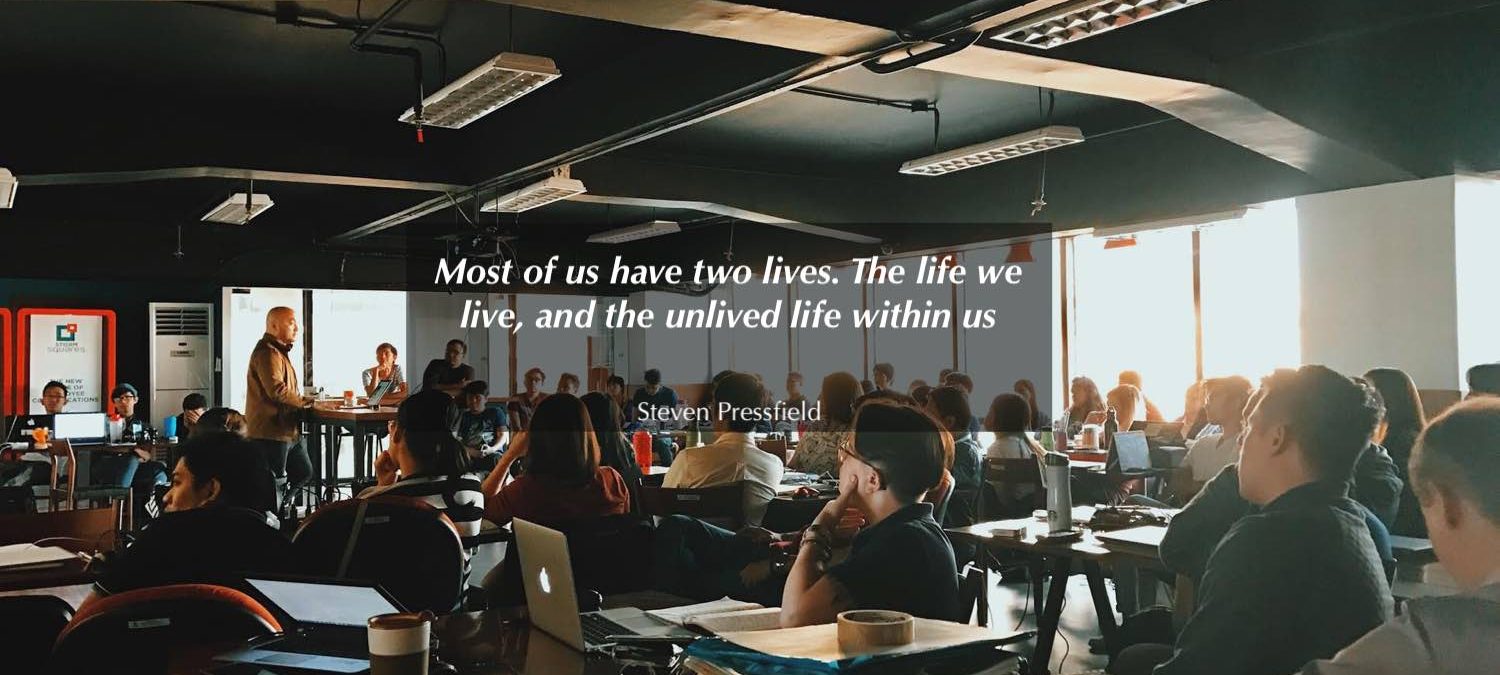The following is a guest post from Dino Alcoseba, newly-minted head honcho at the HR startup Strata.ph. I’ve known Dino for five years now and I’ve seen him develop since coming in as a fresh graduate working for STORM in 2008. Here, he shares about staying the course. I can remember the events Dino describes below (that YM Conversation!), and its a bit jarring to hear what exactly he felt.
Considering the state of young employee turnover not only in startups, but for the entire industry, I think what Dino writes here is pretty important to consider. – Peter

5 years ago, I was stuck with a dilemma…
I just finished packing 8,000 letters to employees for one of Storm’s clients. It was an implementation of an organizational climate survey, which, a few months earlier, seemed alien to me. I knew absolutely nothing about the consulting environment. I didn’t know how things were supposed to be done. All I knew was, it was my birthday, I was supposed to have a party at my house, and I spent almost 36 hours packing letters to unknown people, asking them to log into an online survey – a letter a large number of them ignored. To make matters worse, the delivery of the letters didn’t even need to be done by that day, as evidenced by the lengthy time it took to reach the intended participants, as I found out a few days after.
That experience made me want to quit.
Up to that time, I didn’t know if I actually was enjoying my work. I didn’t consider myself a creative person (I didn’t know I’d have to create report templates from scratch, someone I never did before). I didn’t like the idea of presenting the same things over and over again (something I did for 2 straight months, presenting the same old results to a different set of people and asking them to validate results, covering around 30 FGD’s and 200 people to meet). I just didn’t see myself as staying here for long. The thing is though, I realized up to that point that I didn’t actually have a career plan for myself. I had ideas about my interests, I knew that enrolling in graduate school would be an option, but that was basically it.
I had made up my mind right then and there to talk to our CEO (Peter), and explain the reasons for my resignation. What followed was a lengthy conversation over instant messenger (Y! Messenger, no less) and culminated in…. me staying.
I am thankful up to this day that I made this decision.
Up to now, I do not know why I decided to stay. Maybe it was the promise of better and brighter things to come. Maybe it was just naiveté on my part. But regardless of what those reasons were, it was my first experience that taught me to stay the course.
I know it’s not easy looking at the bigger picture when you’re fresh out of college, all brimming with credentials and aching to make a difference. Sometimes, work doesn’t paint that kind of picture, and it’s something we want to feel everyday. If we don’t feel that we’re doing something that matters, we tend to focus on the little things that annoy us, and distract us from the bigger picture. This culminates in unsatisfactory feelings in work, and ultimately, in tendering our 30 day notice and looking for greener pastures. I am not saying this is wrong. There really are companies that make it hard for us to stay, especially if there were inconsistencies between the job that was explained, and the actual job. But sometimes, staying the course, sticking it out for a little more, matters.
This has been especially true for me.
Making a Difference
Fast forward to 2013-2014, where I’ve been blessed with the opportunity to be a part of Strata, one of Storm’s sister companies, and just recently in May, been tasked with leading it.
It’s been all a haze, and the months have come and gone so fast. It’s hard to believe that it’s been months, but it’s been equally hard to believe that it’s only been months. The work that we’ve been blessed with has been nothing short of amazing. I cannot believe how and why large corporations and big government agencies continue to trust us with their projects. It must mean that I, along with my amazing team, must be doing something right. This is exciting for Strata because it allows us to 1) use our HR knowledge and expertise (something the team LOVES discussing), and 2) make a huge difference in people’s lives. It allows for transformational change in organisations, but recently more with the government sector, partners we’ve recently begun to start working with (and is a personal preference of mine, and I’ve been an avid listener of AM radio since my 1st day of work). It allows us to see directly how our work contributes to society, and how we can make the Philippines a much better place. This is completely unprecedented, and I am completely dumbfounded that we find ourselves in such a good position.
Never Ending Fears
Being part of a startup is hard. That’s just the truth. Leading it is even harder. The amount of decisions that have to be made on a daily basis range from petty (no more ink! where to buy ink?!), to complicated (how to present certain HR methodologies to the right audience), to downright insane (how, as a 27 year old, to tell much older and more experienced people that they have the wrong methodology). I sometimes feel like I’m in over my head, honestly. There are days when my feelings back in 2009 come haunting me back. . There are still days when I don’t feel like meeting some people. There are days when I just want to put earphones on and listen to my Jesuit-inclined playlist (The Song of Rupert Mayer has become a personal favourite). There are days when I wish for a simpler life, maybe one where I just have a role in a company, and I just have to do the same thing over and over again.
But at the end of every single day, I catch myself. I always find something good to smile about. And that, I find, is what gets me through most days.
Work is hard, but so is everything that is significant and life changing.
I find that with my never-ending fears, there are always reasons to stay the course make a difference in this world, and that’s all that matters.














 Burn rate is a synonymous term for negative cash flow. It is a measure for how fast a company will use up its initial shareholder capital. If shareholder capital is exhausted, the company will either have to start making a profit, find additional funding, or close down. (wikipedia)
Burn rate is a synonymous term for negative cash flow. It is a measure for how fast a company will use up its initial shareholder capital. If shareholder capital is exhausted, the company will either have to start making a profit, find additional funding, or close down. (wikipedia)